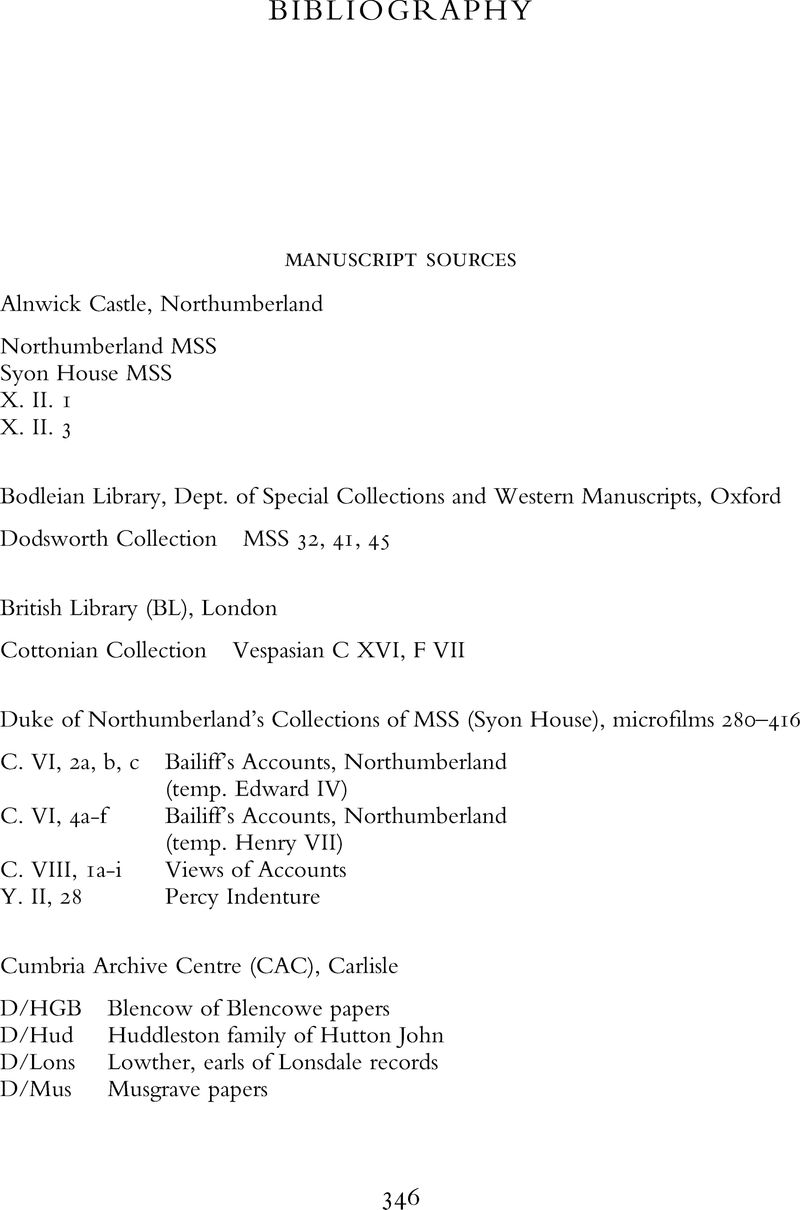Bibliography
Published online by Cambridge University Press: 30 October 2020
Summary

- Type
- Chapter
- Information
- England's Northern FrontierConflict and Local Society in the Fifteenth-Century Scottish Marches, pp. 346 - 386Publisher: Cambridge University PressPrint publication year: 2020



